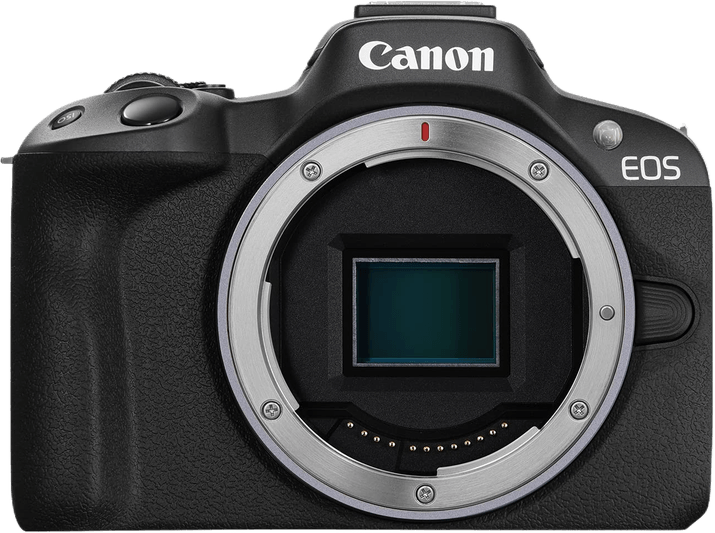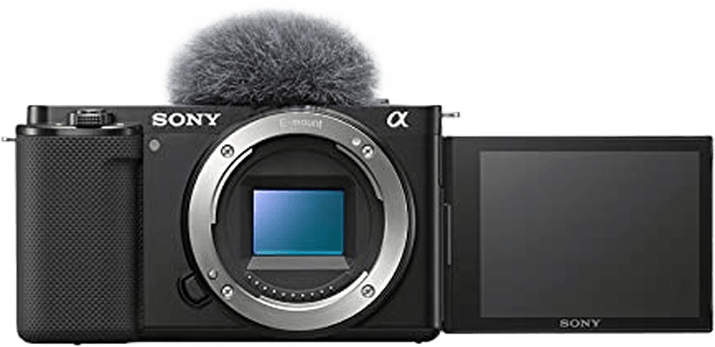Canon EOS R50 vs Sony ZV-E10 Comparison
Canon EOS R50

Sony ZV-E10

The Canon EOS R50 takes the lead with a score of 70/100, while the Sony ZV-E10 follows closely with a score of 65/100. Both cameras are mirrorless and were launched with similar prices: $679 for the Canon EOS R50 and $700 for the Sony ZV-E10.
The Canon EOS R50 is superior in terms of size and weight, measuring 116 x 86 x 69mm and weighing 375g (0.83lbs). This makes it more comfortable to handle and carry around during photography sessions. Additionally, its recent release in 2023 suggests updated features and technology.
On the other hand, the Sony ZV-E10 has its advantages as well. It’s slightly lighter at 343g (0.76lbs) and more compact with dimensions of 115 x 64 x 45mm, which can be beneficial for those who prioritize portability.
Taking these factors into account, the Canon EOS R50 stands out as the better option due to its larger size, which offers improved handling, and its more recent release date. However, the Sony ZV-E10 is still a strong contender for those who value a more compact and lightweight camera.
Canon EOS R50 vs Sony ZV-E10 Overview and Optics
The Canon EOS R50 outperforms the Sony ZV-E10 in optics with a score of 73/100 compared to Sony’s 69/100. Both cameras share several common specifications: 24 megapixels, CMOS sensor type, APS-C sensor size, no image stabilisation, and similar shooting speeds (Canon’s 12 and Sony’s 11).
The Canon EOS R50 excels with its Digic X processor and a higher DXOMARK score for the sensor at 94, contributing to better image quality. Additionally, the Canon EOS R50 features a 3:2 aspect ratio and a Canon RF lens mount, providing compatibility with a wide range of high-quality lenses.
The Sony ZV-E10, on the other hand, has a Bionz X processor and a lower DXOMARK score for the sensor at 86. However, it does have a 4:3 aspect ratio, which may be preferable for certain types of photography. Its lens mount is the Sony E, offering compatibility with Sony’s extensive lens lineup.
In terms of optics, the Canon EOS R50 proves to be superior due to its higher score, more advanced processor, and better sensor performance. The Sony ZV-E10, while slightly inferior in these areas, still has a respectable score and offers an alternative aspect ratio and lens compatibility.
Ultimately, the choice between the Canon EOS R50 and Sony ZV-E10 will depend on individual preferences and priorities, but the Canon EOS R50 holds a clear advantage in optics performance.
Canon EOS R50 vs Sony ZV-E10 Video Performance
The Canon EOS R50 and Sony ZV-E10 both have impressive video capabilities, earning equal scores of 91/100. These cameras share several key features, making them strong contenders for videographers. Both cameras offer 4K video resolution, ensuring high-quality footage. Additionally, they have time-lapse functionality built in, providing users with creative options for capturing dynamic sequences.
The Canon EOS R50 stands out with its slightly higher maximum video dimensions of 3840 x 2160, compared to the Sony ZV-E10’s 3840 x 1920. This difference in dimensions means the EOS R50 can capture a slightly larger area in the frame, potentially providing more detail and a wider field of view for users.
On the other hand, the Sony ZV-E10 matches the Canon EOS R50 in maximum video frame rate, both offering 120fps. This feature allows users to capture smooth slow-motion footage, making both cameras suitable for action and sports videography.
Despite their differences in video dimensions, both the Canon EOS R50 and Sony ZV-E10 excel in video performance, as evidenced by their equal scores. The Canon EOS R50’s advantage in video dimensions may appeal to some users, while the Sony ZV-E10’s matching frame rate ensures it remains competitive in capturing fast-paced action. Ultimately, the choice between these two cameras will depend on individual preferences and specific project requirements.
Canon EOS R50 vs Sony ZV-E10 Features and Benefits
The Canon EOS R50 wins the feature comparison with a score of 72/100, while the Sony ZV-E10 scores 68/100. Both cameras share several specifications, including a 3-inch screen size, touchscreen, flip screen, absence of GPS, and the presence of WIFI and Bluetooth connectivity.
The Canon EOS R50 outperforms the Sony ZV-E10 with its higher screen resolution of 1,620,000 dots, compared to the Sony’s 920,000 dots. This difference results in a sharper and clearer display on the Canon EOS R50, making it easier to view and edit images on the camera itself.
On the other hand, the Sony ZV-E10 has no significant advantages over the Canon EOS R50 in terms of features. Both cameras are evenly matched in most aspects, with the only notable difference being the screen resolution.
In this comparison, the Canon EOS R50 is the clear winner due to its superior screen resolution. The Sony ZV-E10, while still a capable camera, does not offer any notable advantages over the Canon EOS R50 in terms of features. Users looking for a camera with a better display and overall feature set should choose the Canon EOS R50, while those who place less importance on screen resolution may still consider the Sony ZV-E10 as a viable option.
Canon EOS R50 vs Sony ZV-E10 Storage and Battery
The Canon EOS R50 outperforms the Sony ZV-E10 in storage and battery, scoring 35/100 compared to the Sony’s 24/100. Both cameras share common specifications, including one memory card slot each and compatibility with SD, SDHC, and SDXC cards. However, the Canon also supports UHS-I and II, offering faster read and write speeds.
The Canon EOS R50 has a better battery life of 370 shots, compared to the Sony’s 440 shots. Additionally, the Canon uses the LP-E17 battery type and offers USB charging, making it more convenient for on-the-go use.
On the other hand, the Sony ZV-E10 accepts Memory Stick Pro Duo cards, providing an extra storage option. However, the Sony lacks USB charging, which may be inconvenient for some users.
In terms of storage and battery, the Canon EOS R50 proves to be the superior choice due to its better battery life, USB charging capability, and faster memory card compatibility. The Sony ZV-E10 does offer an additional storage format but falls short in other aspects.
Canon EOS R50 vs Sony ZV-E10 – Our Verdict
Are you still undecided about which camera is right for you? Have a look at these popular comparisons that feature the Canon EOS R50 or the Sony ZV-E10:

